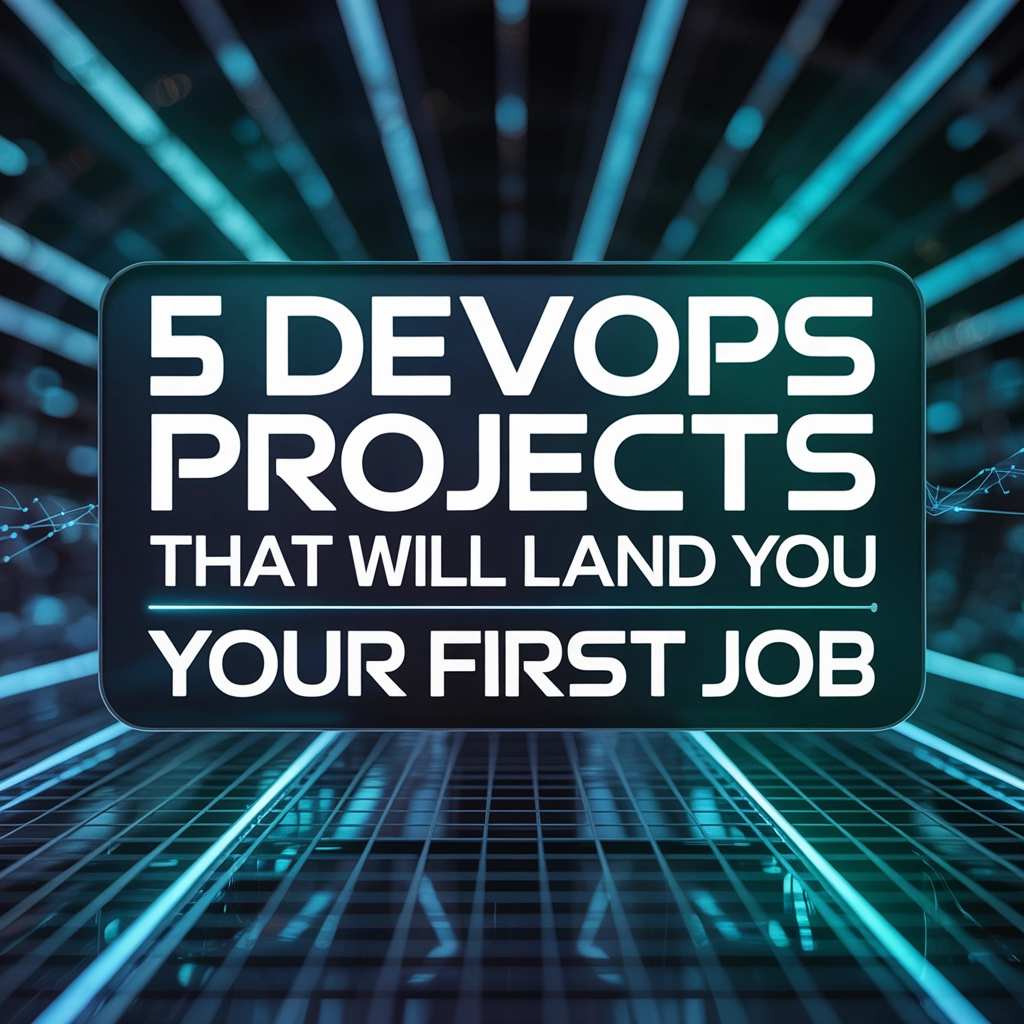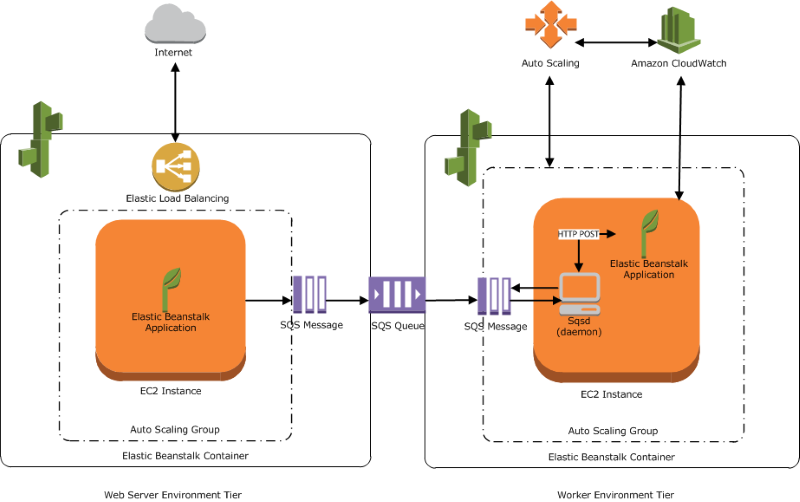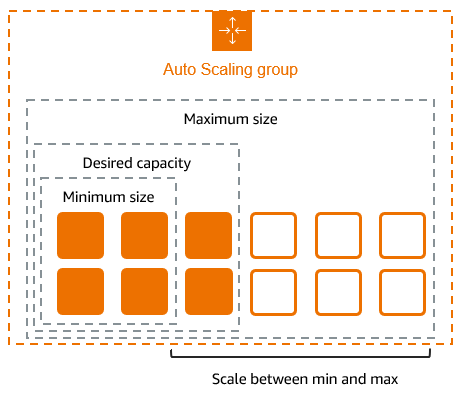Breaking into the DevOps world isn't just about knowing the theory—it's about showing what you can actually build. As someone who's helped dozens of beginners transition into tech careers, I can tell you that having real projects on your GitHub is worth more than a dozen certifications when you're starting out.
The cold truth? Hiring managers spend less than 30 seconds scanning your resume, but they'll invest serious time reviewing your portfolio projects. These projects are your ticket to proving you can walk the walk, not just talk the talk.
Let's dive into five hands-on DevOps projects that will not only teach you essential skills but also make recruiters actually want to interview you. These aren't just theoretical exercises—they're the same fundamental projects that working DevOps engineers tackle daily.
1. CI/CD Pipeline with GitHub Actions
Nothing says "I understand modern development workflows" like a functioning CI/CD pipeline. This project is particularly impressive because it demonstrates automation skills that companies desperately need.
What you'll build: A complete continuous integration and delivery pipeline that automatically tests, builds, and deploys code changes.
Why employers love it: This project shows you understand the core DevOps principle of automating repetitive tasks and can implement solutions that save development teams countless hours.
Tools you'll use:
- GitHub/GitLab for source control
- GitHub Actions for pipeline automation
- A simple web application (can be as basic as a "Hello World" app)
- Docker for containerization
Implementation steps:
- Create a simple web application repository on GitHub
- Set up GitHub Actions workflow files (.github/workflows/main.yml)
- Configure automated testing whenever code is pushed
- Add build steps to create Docker images
- Configure automated deployment to a free hosting service like Heroku
Pro tip: Add status badges to your README.md that show your tests are passing. This small detail shows attention to quality and documentation—traits employers value highly.

Level up: Extend your pipeline to include security scanning using free tools like OWASP Dependency Check. Learning to integrate security into your automation makes you stand out from other candidates.
2. Infrastructure as Code with Terraform
Manual server configuration is a thing of the past. Modern DevOps teams use Infrastructure as Code (IaC) to provision and manage their environments, and Terraform is one of the most in-demand tools for this purpose.
What you'll build: A complete infrastructure setup using code that can be version-controlled, tested, and automatically deployed.
Why employers love it: This project demonstrates you can create reproducible environments—solving one of the biggest headaches in IT operations.
Tools you'll use:
- Terraform
- AWS (free tier) or DigitalOcean ($5/month)
- Git for version control
Implementation steps:
- Install Terraform locally
- Set up a cloud provider account (AWS free tier works great)
- Write Terraform code to provision a web server
- Implement best practices like modularization and remote state
- Document your architecture with a simple diagram
What to include in your portfolio: Show both the Terraform code and screenshots of the working infrastructure. Create a detailed README explaining your architecture decisions and how variables can be changed to scale the environment.
Level up: Implement a multi-environment setup (dev/staging/prod) using Terraform workspaces or separate configuration files. This shows you understand real-world deployment patterns.
3. Containerization and Orchestration Project
Containers have revolutionized application deployment, and Kubernetes has become the standard for orchestrating them at scale. This project demonstrates both skills in one impressive package.
What you'll build: A containerized application deployed on a Kubernetes cluster with proper monitoring and scaling capabilities.
Why employers love it: This project proves you understand modern application architecture and can implement scalable, resilient systems.

Tools you'll use:
- Docker for containerization
- Kubernetes (using minikube locally or a managed service)
- A simple multi-component application (like a basic MEAN/MERN stack app)
Implementation steps:
- Create Docker images for your application components
- Write Kubernetes manifests (deployments, services, etc.)
- Set up a local Kubernetes cluster using minikube
- Deploy your application to the cluster
- Implement basic monitoring and demonstrate scaling
Portfolio highlight: Include your Dockerfiles, Kubernetes YAML files, and a diagram showing your application architecture. These artifacts demonstrate both technical skills and your ability to document solutions.
Level up: Add Helm charts to your project to show you understand package management in Kubernetes. Check out our guide on Kubernetes orchestration fundamentals for best practices.
4. Monitoring and Observability Solution
When systems fail (and they will), DevOps engineers are the first responders. Creating a monitoring solution shows you know how to prepare for the inevitable and respond effectively.
What you'll build: A comprehensive monitoring system that tracks application health, system metrics, and provides alerting capabilities.
Why employers love it: This project demonstrates you understand system reliability and can implement solutions that prevent downtime—directly impacting business continuity.
Tools you'll use:
- Prometheus for metrics collection
- Grafana for visualization
- Alert Manager for notifications
- A simple application to monitor
Implementation steps:
- Set up Prometheus to collect metrics from your application
- Configure Grafana dashboards to visualize the data
- Implement alerting rules for critical conditions
- Create runbooks for common issues
- Document your monitoring approach
Portfolio highlight: Include screenshots of your dashboards and alert configurations. Create a presentation on what metrics you chose to monitor and why they matter from a business perspective.

Level up: Implement log aggregation using the ELK stack (Elasticsearch, Logstash, Kibana) or Loki with Grafana. Multi-faceted observability demonstrates advanced understanding of system troubleshooting.
5. Automated Disaster Recovery Solution
Disaster recovery isn't the flashiest topic, but it's critical for business continuity. Creating an automated disaster recovery solution shows you understand risk management—something that senior leaders deeply value.
What you'll build: An automated system that backs up critical components and can restore them in case of failure.
Why employers love it: This project demonstrates you think about worst-case scenarios and can implement systems that protect business assets—showing business acumen alongside technical skills.
Tools you'll use:
- Bash or Python scripting
- AWS S3 or equivalent storage
- Terraform for infrastructure
- Scheduling tools (cron, AWS EventBridge)
Implementation steps:
- Create scripts to back up application data and configurations
- Set up scheduled execution of backup routines
- Implement verification of backup integrity
- Create automated restoration processes
- Document your disaster recovery plan and test results
Portfolio highlight: Include your scripts, architecture diagram, and most importantly, documentation of your testing procedures. Show metrics on restoration time to demonstrate quantifiable results.
Level up: Implement a complete automation approach that includes failover testing in a separate environment. This demonstrates you can verify your disaster recovery plans actually work.
Bringing It All Together
The most impressive candidates don't just build isolated projects—they create a cohesive portfolio where projects work together. Consider extending your projects to create a complete system:
- Use your CI/CD pipeline to deploy the containerized application
- Use Terraform to provision the infrastructure for your Kubernetes cluster
- Implement monitoring for both your application and infrastructure
- Include backup and recovery for critical components
By connecting these projects, you'll demonstrate systems thinking—a critical skill for DevOps roles that immediately sets you apart from other candidates.
How to Showcase Your Projects
Building these projects is just the first step. Presenting them effectively is equally important:
- Create detailed README files that explain what you built, why, and how to use it
- Include architecture diagrams showing components and data flows
- Document challenges and solutions to show your problem-solving process
- Create short demo videos for each project to make it easy for busy recruiters
- Highlight specific skills each project demonstrates (automation, security, etc.)
The DevOps field continues to evolve rapidly, and starting with these foundational projects will give you the confidence and portfolio to land your first role. Remember that hiring managers are looking for candidates who can demonstrate practical skills and a problem-solving mindset—exactly what these projects showcase.
Ready to take your DevOps skills to the next level? Check out our comprehensive guides on DevOps automation and infrastructure as code to help you build these projects with expert guidance.
What project will you tackle first? The journey to your first DevOps job starts with that first commit!





5 Comments
[…] Build personal projects (check out these 5 DevOps projects that can help land your first job) […]
[…] mastering Jenkins is a crucial step on your journey. Check out our DevOps career roadmap and DevOps projects that will land you your first job to continue your learning […]
[…] If you're looking to further enhance your cloud and DevOps knowledge, check out our other resources at DevOps Horizon, including our popular article on 5 DevOps Projects That Will Land You Your First Job. […]
[…] out our detailed guide on 5 DevOps Projects That Will Land You Your First Job to put these skills into […]
[…] practices and infrastructure management, check out our other articles at DevOps Horizon. Our 5 DevOps Projects That Will Land You Your First Job guide is particularly helpful for those looking to build practical security […]